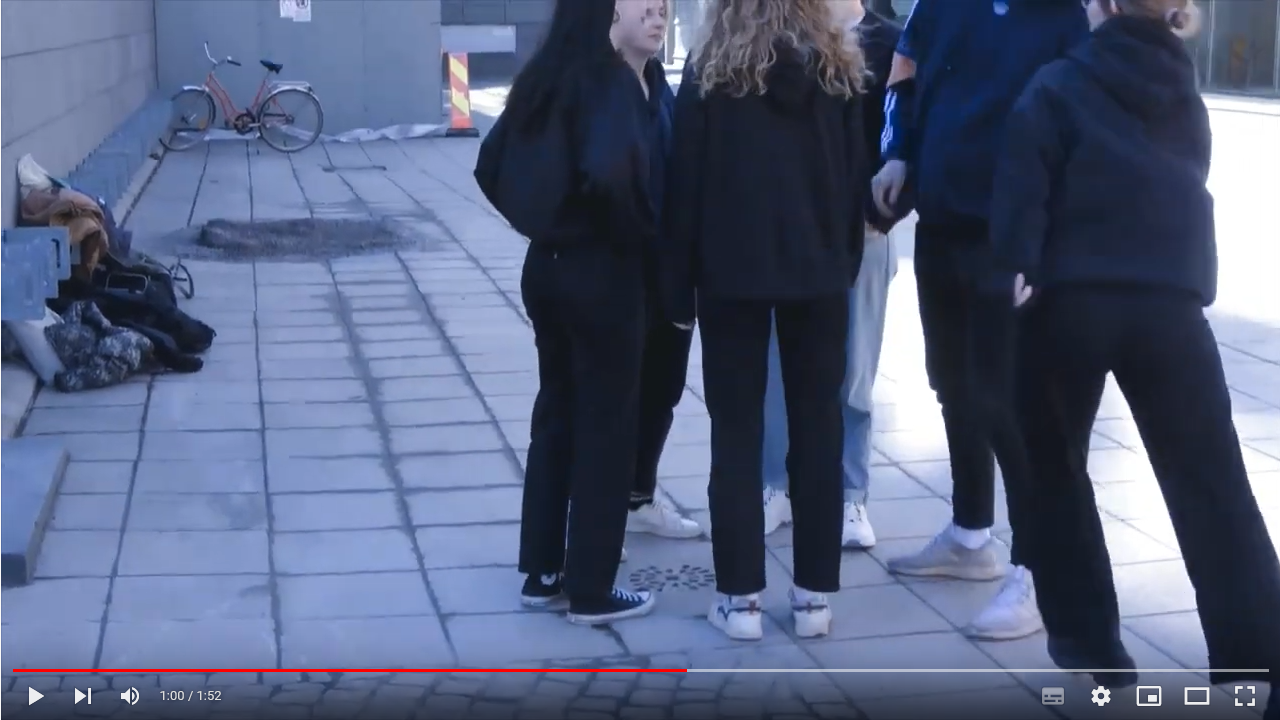Author: Marianna Vivitsou
The phenomenon-based learning course combines on-site learning on Suomenlinna, hybrid learning for those who cannot attend f2f and synchronous web-conferencing learning for tutorial work and the work in groups. The digital storytelling part of the course uses audio-visual narrative approaches and methods for sustainability-related storytelling from the phenomenon-based point of view on/in teaching and learning. Digital storytelling is based on an audio-visual project and work in groups where students build their stories collaboratively. At a different layer of collaboration, the groups meet with online for more focused discussions on new concepts and topics in teacher-led tutorials.
For the audio-visual project, the groups record, edit and share a story in video format with approximate duration 2-3 minutes. The story needs to present its main metaphors, storyline/plot and characters using audio-visual formats considering the modalities of space and time as well.

‘Obstructors of Harmony‘ is one such video story that three women students in the course built together in group work. The story is about the phenomenon of marginalization in classrooms and touches upon the area of social sustainability. Social sustainability is concerned with matters of injustice and inequalities. The ‘Obstructors of Harmony’, the main metaphor of the story, refers to the ‘Other’. As the storytellers explain when summarizing the stages and the background of their work, ‘The main idea has … been (that) someone feels different from the group and thus becomes “the Other.”
From the very beginning of the creative process, we all agreed that there would be no dialogue in our film. Our aim was to make the story so obvious that it speaks for itself.
A clear perspective on the chosen theme
‘At first, we had the idea of filming birds but when we decided to focus on the article of Juva et al. (2018) it became clear that it is easier to have living persons to perform’. In these words, the group describes the great distance they ran from more general ideas to more focused ones to address more specifically defined audiences. The story can indeed serve pedagogical purposes and get integrated into classroom time as, for instance, an opportunity for reflection, brainstorming and so on, on the burning theme of otherness. Also, the story is in alignment with the official policies: ‘One of the goals in the Finnish Curriculum is to teach students to value themselves and learn who they really are. Teachers have the task of making all students feel heard, seen and valued (OPH 2014). Teachers should help the pupils to develop to global citizens. … The aim is also to help pupils to be aware of the world outside the known to them. We must teach the pupils already at the early stages how we all are people despite local, national or other differences. We must show the pupils that we all care for global sustainability. (OPH 2021).’ having established the relevance of their story to the educational and pedagogical purposes, the group go on to argue: ‘The film shows what happens when we teachers fail in all the above. Instead of guiding the students to take “the Other” to be a part of the class and supporting “the Other” to be at peace with themselves, the teacher becomes one of the bullies. We chose to show the “otherness” of “the Other” with movement that doesn’t fit in. In our video we won’t specify what the otherness in the person is. The viewer can decide for themselves how to interpret our video. Our aim was also to show how the teacher ignores “the Other” and only tries to make “the Other” to fit in the norm – move like the group or preferably not to move at all.

Why this video story works as counterpublic
Counterpublics are alternative spaces, especially on the modern social media, where users identify and discuss societal problems in order to influence policy-making and political action. Clearly, this story that is theoretically grounded on recent scientific research and uses the filming conventions in an imaginative way challenges the established narrative by bringing forward burning matters that concern the totality of the society. The students-storytellers go bold and display what it looks like to be in the ‘the perimeter of normality’, as students put it.
To illustrate the perimeter, the filming takes place in a corridor, as, the students explain, this ‘was a closed scene and in school life things happen in the corridors’.
In this way, the story sheds light on pressurizing norms and articulates a voice against exclusion and bullying. These norms are upheld when teachers ignore students who they do not perceive as “normal.” This meaning is also conveyed through the sarcasm underlying the ‘obstructor of harmony’ metaphor in the title.
It is as if the title is inviting us to to ask, ‘who is the obstructor?’ and ‘what (or whose) harmony is obstructed?’
Finally, ‘The film does not have a happy ending’, the students admit. In the end, the main character (obstructor) yields to the norms because, in reality, (alas!)* (obeying)** is easier than being excluded.
These tough issues raised by the students of the sustainability course shaped up into a video story that used elements from silent movies with no voices, only the ambient surrounding sounds present. An effort was put so that the actors not be recognized, with the focus being cast on the bodies and movement. In this way, anonymity was also served along with both the aesthetic and embodiment elements that were integrated in the storytelling.
The story was shared through a social media platform as unlisted. The written description on the social media platform gives an account of the background of the story and makes visible the intentions of the storytellers as well as the theoretical grounding of the story. An innovative piece of work that renews the hope that pioneer acting and future teachers as activist-intellectuals (that the society so much needs) actually exist!
‘author’s exclamation
” author’s edit

